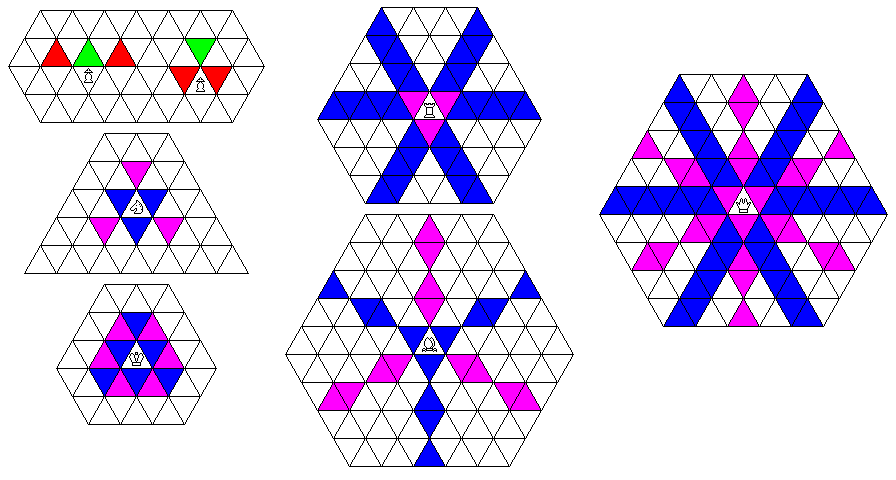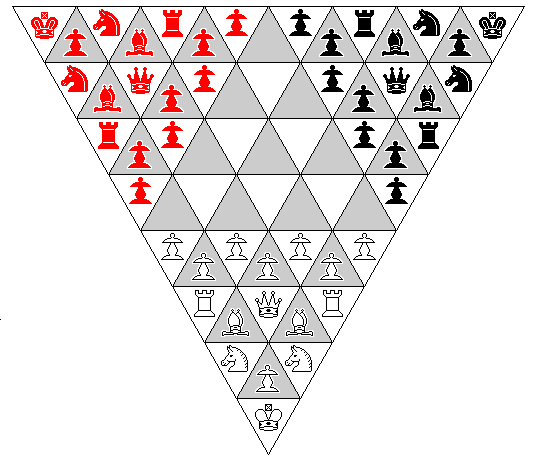
Although proposals for chess variants played on boards with spaces in the shape of triangles are rare, I have encountered at least one. In that one, the moves of the pieces were as shown below:

It was in 1897 that the book "Directions for Playing Triangle" was published; "Chess and Checkers" was its subtitle. The author was one Warren Morris Babbitt, M. D..
As can be seen from the diagram of the moves of the pieces, they are made to move in straight lines, not loops, and they are made to be functionally analogous to their counterparts in regular Chess rather than geometrically analogous. However, it should be noted that the Bishop can move to any square on the board, and thus is significantly stronger than the Knight.
While the moves of the pieces in the game of hexagonal chess by Władysław Gliński are such that it is very difficult to checkmate the King, and giving 1/4 of a point for stalemate is, in my opinion, not enough to make up for it, it appears to me that this form of chess is similar enough to the conventional form to be entirely playable.
The move of the Pawn is affected by whether it is on a triangle that points forwards or points backwards; in the case of the other pieces, if the triangle points the other way, one just has to rotate the diagram to find the right moves.
The initial arrangement of the pieces on the board is as shown below:

The Pawn has a double-step first move, and is subject to en passant capture.
Promotion is only to a piece that has been captured, and the game has one unusual rule which I am inclined to deprecate: after a Pawn is promoted, the promoted piece is then immune to capture until it is moved off of the promotion square. However, given that this is a game for three players, such a rule may be reasonable in that context, although it sounds like something that would be suggested or assumed by someone just beginning to play chess.